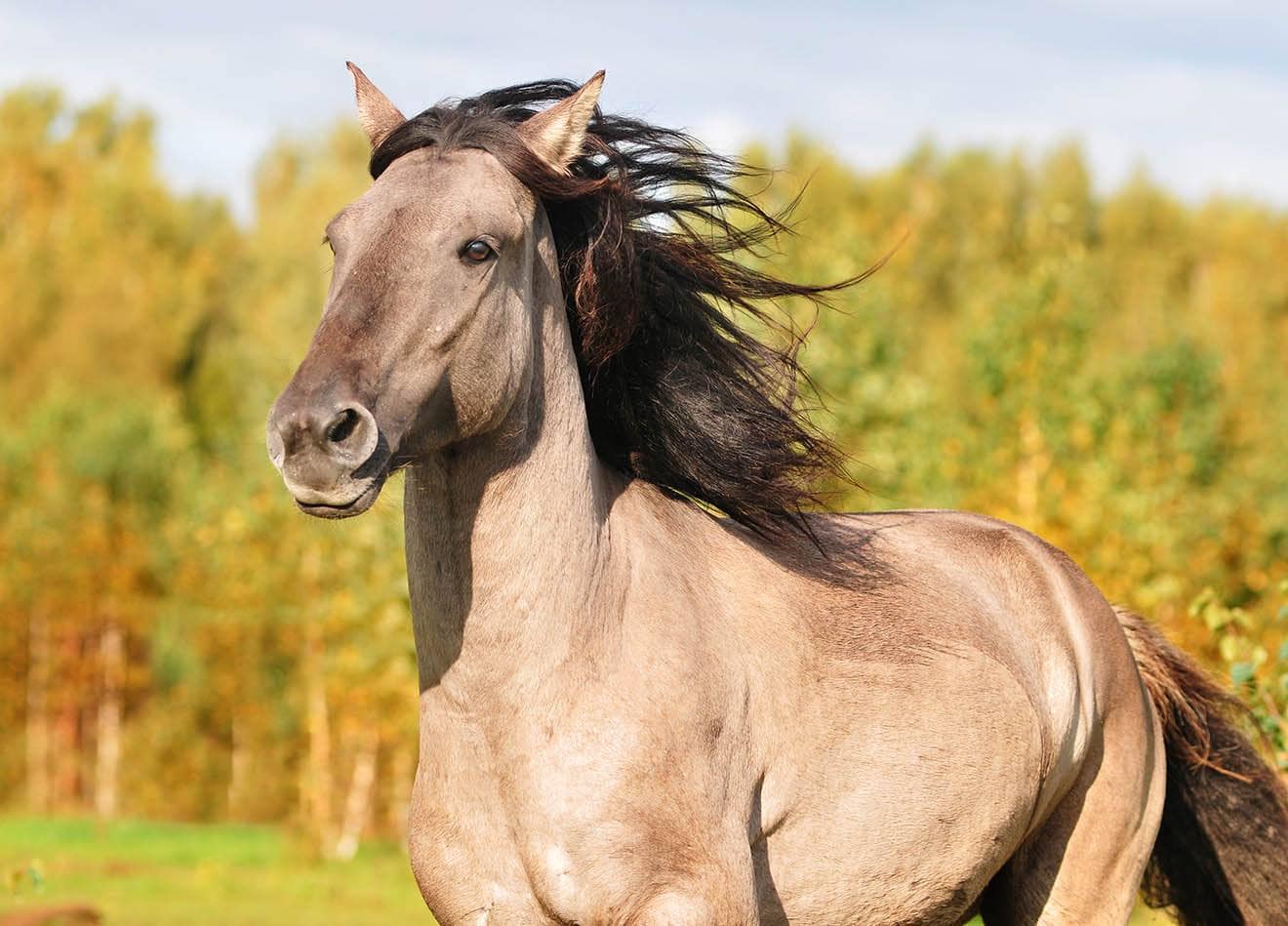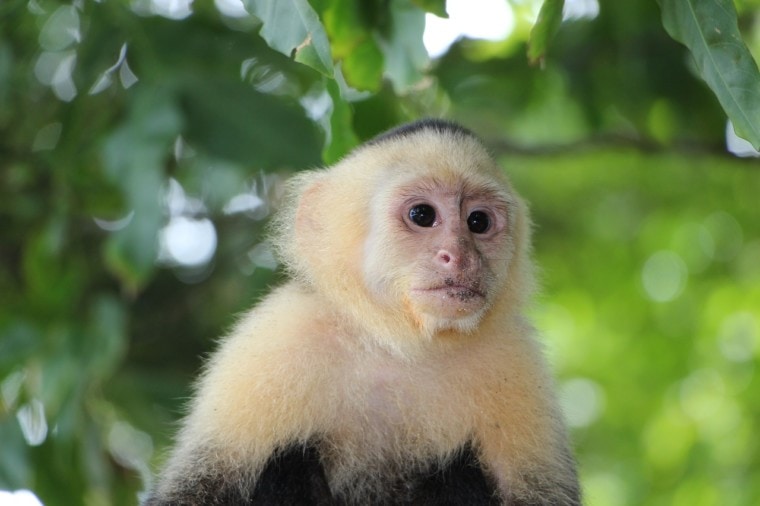
Click Below to Skip Ahead
It’s hard to deny the allure of keeping a monkey as a pet. In television shows and movies, it always looks so cool, so you may be wondering about the best monkeys for pets. But the reality of keeping a primate as a pet is in stark contrast to the way you probably imagine it. These creatures require outrageous amounts of care and space and many species can become aggressive or violent, even after years of peaceful cohabitation.
Still, many people keep monkeys and other primates as pets. In fact, in the US alone, it’s estimated that there are approximately 15,000 primates currently being kept as pets.1 Of course, with more than 330 different monkey species to pick from, there may be some that make better pets than others. However, adopting a pet monkey isn’t advised. In this article, we’ll explore this concept further.
The 10 Reasons Why Monkeys Don’t Make Good Pets
When it comes to keeping pets, certain animals reign supreme. Dogs, cats, birds, and goldfish tend to be the most common pets for a variety of reasons. These animals are easy to care for, generally docile, and have been domesticated for long enough to present traits that make them good companion pets.
Monkeys, on the other hand, display none of these traits. Here are some of the reasons why you shouldn’t adopt monkeys.
1. Ethical Concerns
- The monkey’s mother was shot by poachers or hunters and the infant was retrieved from the mother’s body (assuming the monkey was not crushed as the mother fell down after being shot).
- The monkey’s mother is kept in a breeding facility and her baby was taken from her at a young age, inevitably causing depression and trauma to both the mother and her baby.
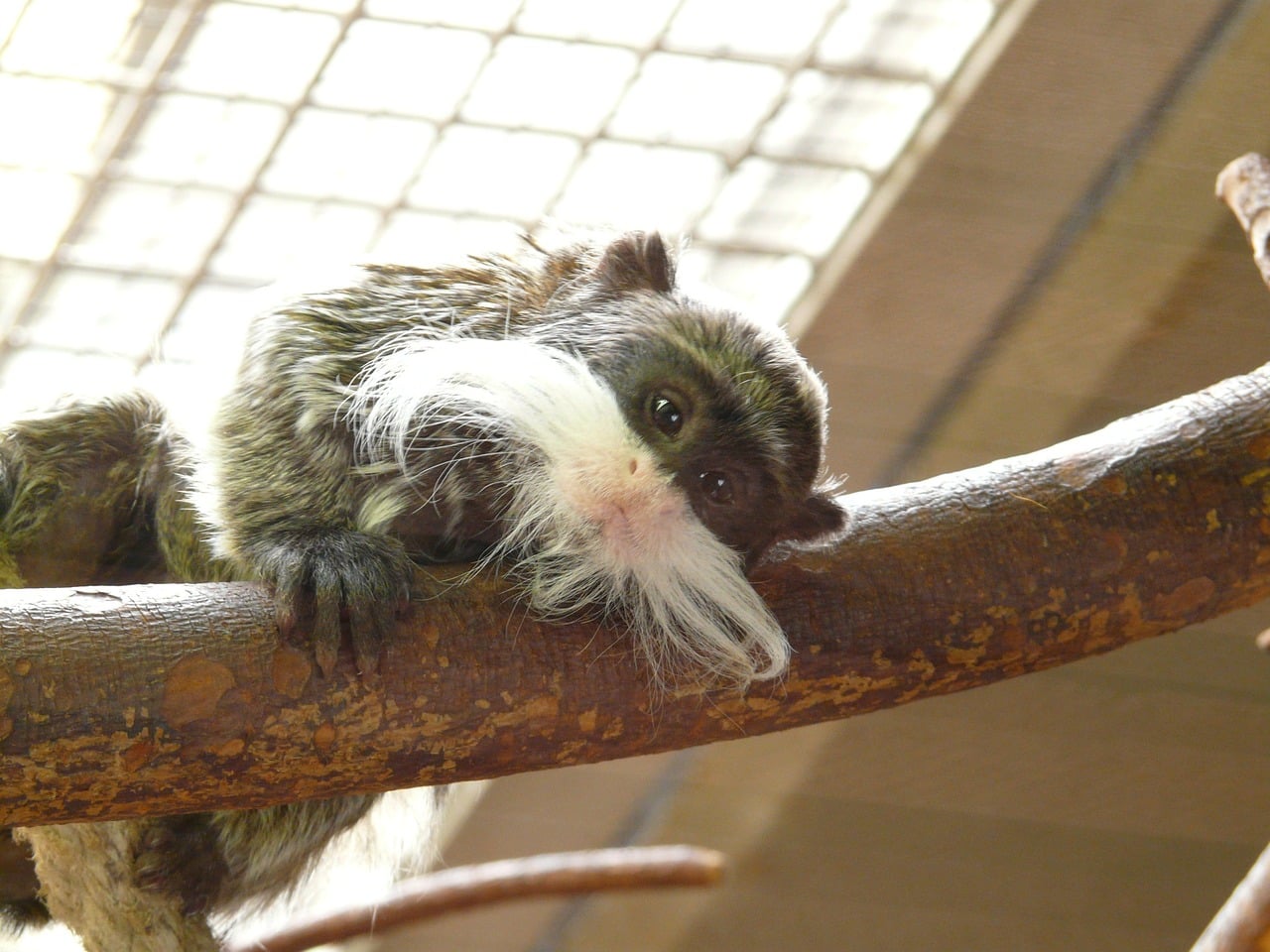
2. Unpredictable Behavior
You also have to consider a primate’s behavior. There have been primates that were kept as pets for many years without incident who suddenly had a change of heart and became violent. As monkeys mature, their demeanor and behavior can suddenly change, and they even become violent. One woman even had her face and hands ripped off by a chimp that had long been kept as a pet by her close friend.
Unfortunately, another form of unexpected behavior is observed in monkeys. In captivity they can acquire unhealthy human habits when they mimic their owners’ antics (such as chain smoking or drinking alcohol).
3. Monkeys Are Expensive
Another deterrent to keeping a monkey as a pet is the outrageous cost associated with purchasing and keeping a primate. Some monkeys aren’t too pricey, such as capuchins, which can be purchased for less than $10,000. Not cheap by any means, but some show-quality canines can cost as much. Start looking at bigger primates though and the price climbs exponentially. A chimpanzee, for example, will set you back about $70,000, which is a pretty hefty investment for a pet.
Don’t forget about the cost of housing and upkeep. Your monkey will need a massive enclosure with high ceilings and things to climb. That’s going to cost a pretty penny to put together. Once it’s complete, you’ll also have to pay for all the food your pet needs, which will be about the same amount of food as you eat each day.
Additionally, you’ll need to pay for veterinary care, which can be quite expensive for an exotic pet. And with a monkey’s massive attention requirements, you’ll need to take a lot of time off from work, so don’t count on having a full-time income if you want to keep a pet primate.
4. Monkeys are (Very) Messy
Monkeys are exceptionally messy animals and will throw their feces and urine all over your house. Their agility and climbing abilities allows them to easily go around your house and break furniture or destroy your property without much effort (if any).
5. Health Risks to Humans
Monkeys carry many parasites and diseases that they can pass onto humans. These are also known as zoonotic diseases. A monkey that is apparently healthy may easily pass an ailment to you if they bite or scratch you. At other times, they don’t even need to bite or scratch you. They may simply be a vessel that lets other parasites transmit diseases to you. For example, monkeys may harbor dengue or malaria (two viral ailments that may cause fatalities in humans) that can be passed to you via a mosquito vector.
6. Hierarchy Issues
Monkeys live in a hierarchy. This is a social order where one member is in charge and the others follow and protect the group. If a monkey bonds with you, they will consider just you as part of their group and will viciously bite or attack other people in order to protect you. They may also view other humans as a threat to their rank in the hierarchy if they observe them interacting with you and become violent as a form of protest.
7. Social Requirements
It is widely accepted that the complex social dynamics of monkeys cannot be fulfilled in captivity by humans. Monkeys are complex animals that take time to develop and learn the intricacies of their everyday life from living in a troop. Psychological damage is inevitable in monkeys that are kept as pets.
8. Relocation Limitations
Some people might be lulled into a false sense of safety by assuming they can keep a baby monkey for a while and just offer the monkey up to a zoo or wildlife rescue facility when they feel they can no longer handle the monkey’s antics and behavior. However, these places can’t always adopt newcomers as they’re often limited by budget and the number of available enclosures they have for animals that are surrendered to them. At times, animals that end up going to these places may not receive the care or housing that a donator perceives they would.
9. Demand Forces Supply
Though the monkey pet trade does sound rightfully horrific, the truth is the cycle will keep repeating itself if people keep opting to buy pet monkeys. By choosing to adopt a monkey, you will feed into the cycle of denying these amazing animals a fulfilling and proper life they only obtain in their natural wild habitats.
10. Legal Restrictions
On top of all the care and cost requirements of monkeys, you’ll also have to consider the legality of owning a pet primate where you’re located. Many laws govern the captivity, transport, and sale of exotic creatures such as monkeys. Many states have outright banned such exotic pets, though some states do allow them. Even these states have strict rules regarding the keeping of monkeys as pets, so make sure you do some thorough research before deciding to purchase a pet primate. Currently, at least 15 states will allow some types of primates to be kept as pets, though the specific laws surrounding such actions vary in each state.
Alternative Ways to Help Monkeys
“Adopt” a monkey at a wildlife center or a zoo
Participate in Seminars
Do Not Feed Wildlife
Brush Up On Regulations
Always Choose Love

The 7 Types of Monkeys That Are Kept as Pets Are:
Pet Keen does not endorse or encourage keeping monkeys or other primates as pets. This list is for informative purposes only.
1. Capuchin
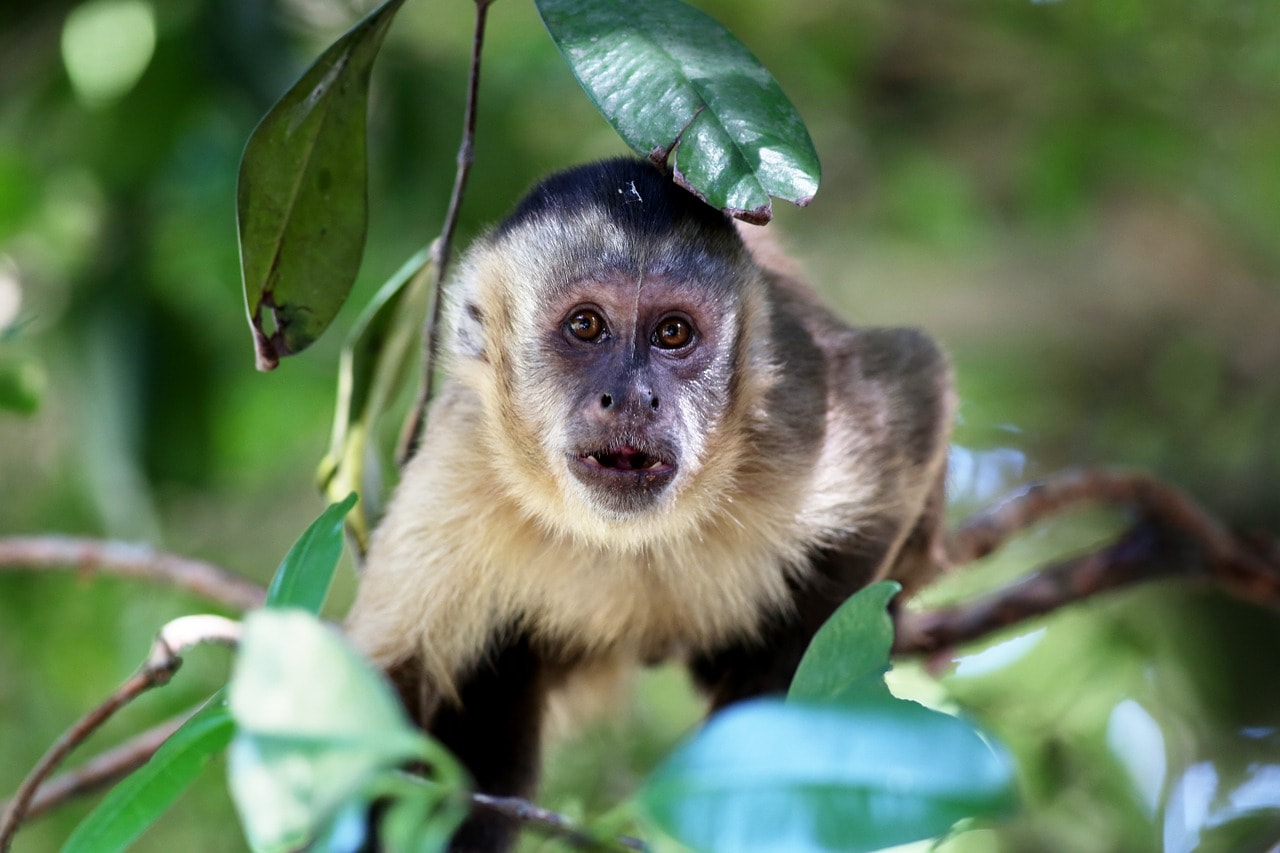
Capuchin monkeys are much smaller than chimps, making them easier to care for and far less dangerous. Standing less than 2 feet in height and weighing under 10 pounds, these monkeys aren’t big enough to rip off your face like a chimp could. Capuchins have an average lifespan of 25 years, so you’ll still have it for a long time, but it’s not the six-decade investment you’ll be putting into a chimpanzee.
2. Squirrel Monkey
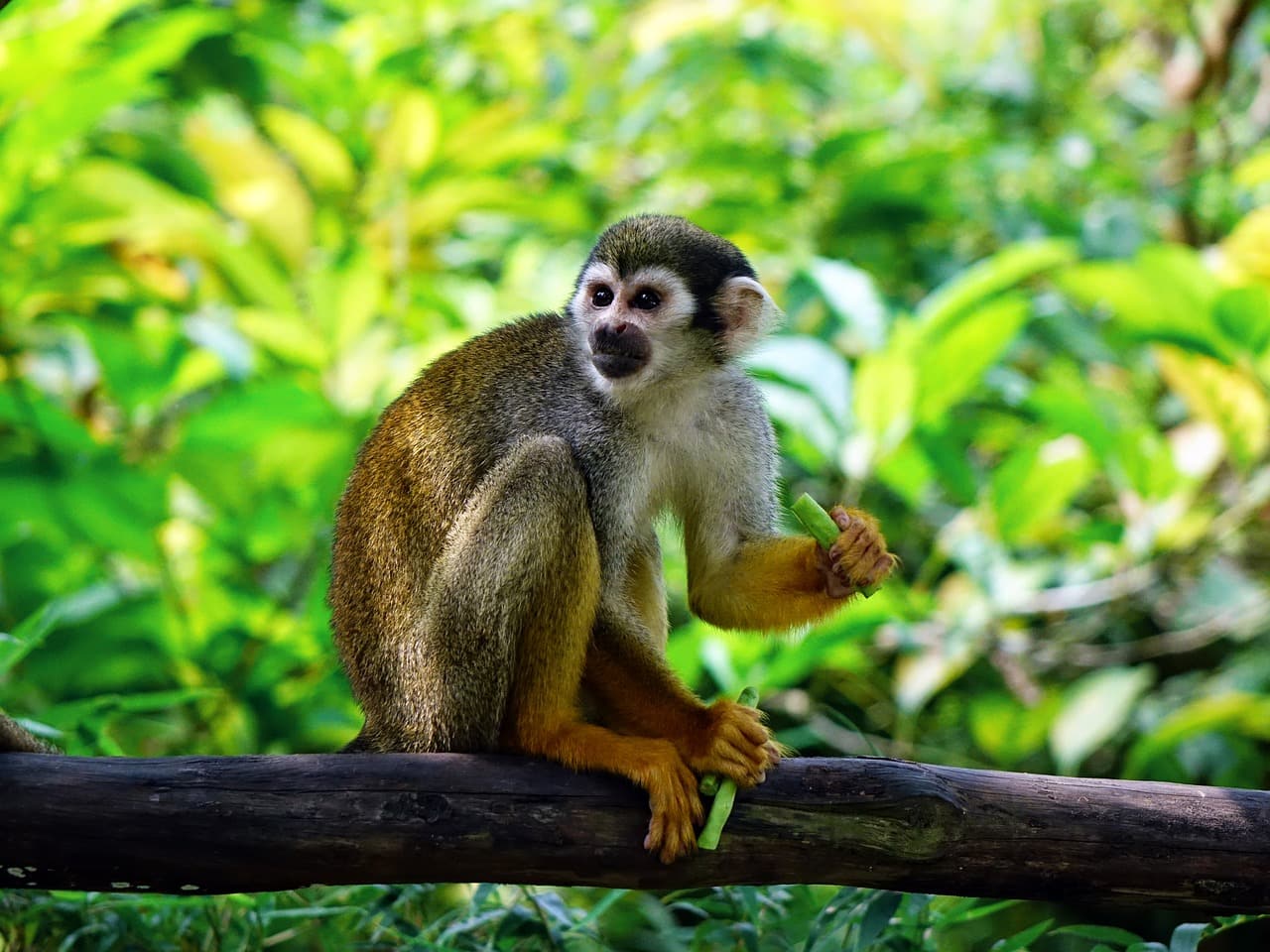
Squirrel monkeys are on the smaller side of the spectrum, generally reaching lengths of just 10-14 inches without the tail. This cute monkey breed usually weighs just 1-3 pounds, but they’re incredibly active and acrobatic creatures that need a lot of space. They love to hang by their tails and swing across tree branches, so you’ll need a massive enclosure with lots of trees to satisfy a squirrel monkey. They’re known to be picky eaters though, so even though a squirrel monkey doesn’t eat as much as a chimp, you’re still likely to experience dietary difficulties.
3. Spider Monkey
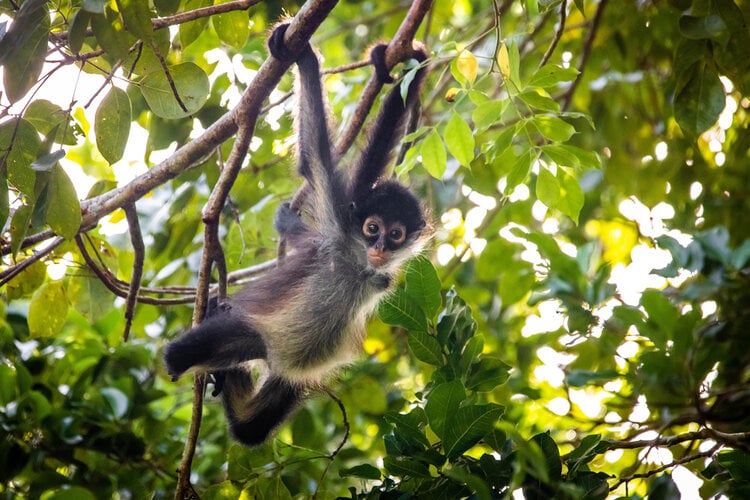
Spider monkeys are one of the few types of monkeys that most people can name. Unfortunately, even though they’re kept as pets, they’re incredibly messy! While most monkeys can be kept in diapers, spider monkeys commonly rip their diapers off and throw them around. Furthermore, spider monkeys are extremely social and need even more attention and interaction than most of the other monkey breeds. Without ample attention, spider monkeys are likely to become aggressive.
4. Marmoset
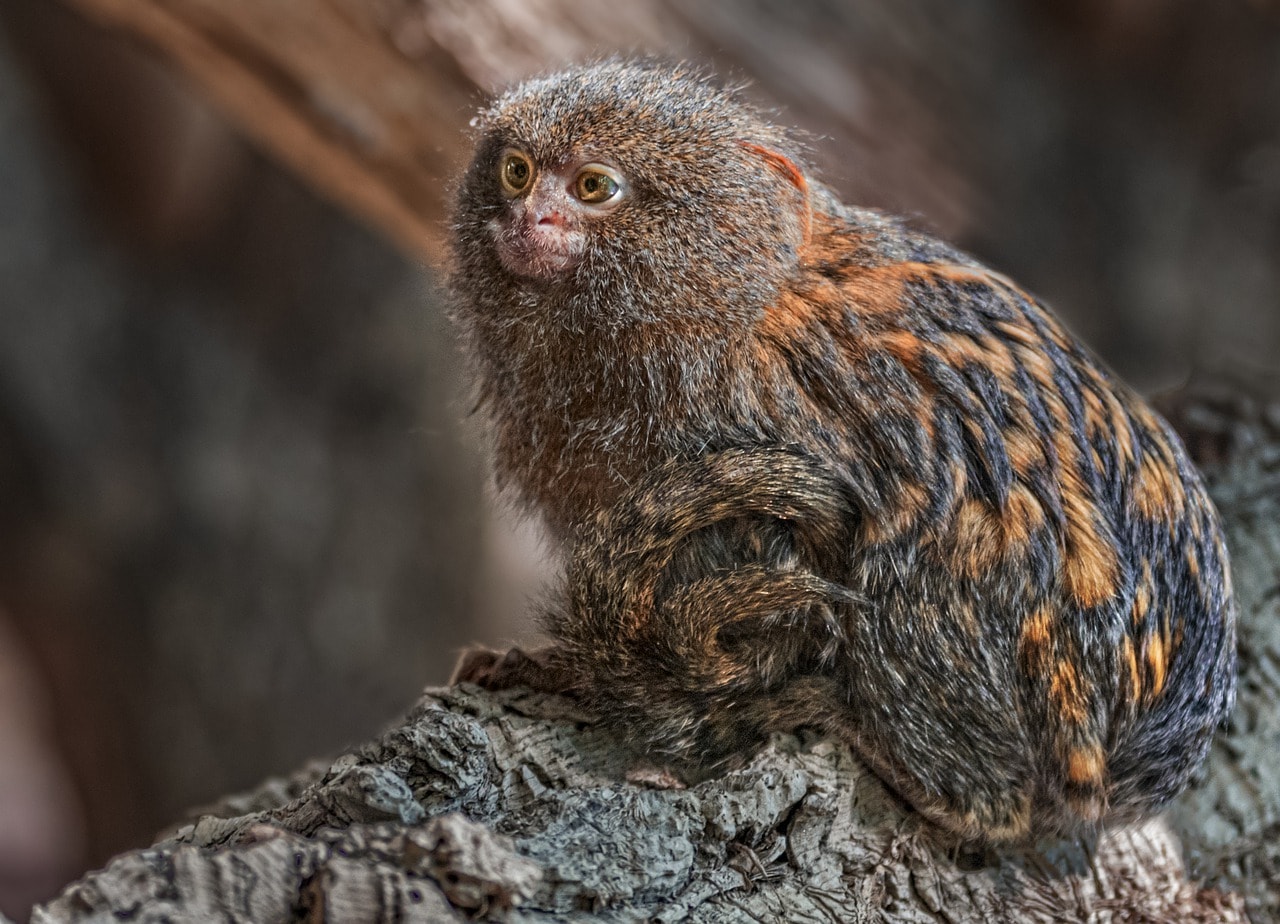
Monkeys are never quiet pets, but marmosets might be the loudest of them. When a marmoset feels neglected, it will yell and scream, ensuring that you don’t miss its displeasure. These primates have a shorter lifespan than many, topping out at about 20 years. There are several types of marmosets, and on average, they’re just 8 inches long, making them one of the more manageably-sized monkeys on this list.
5. Guenon

Guenons are medium-sized monkeys that are about 16-22 inches tall and weigh 5-15 pounds on average. They’re beautiful monkeys that display a wide range of colors, including red, green, and yellow. Interestingly, guenons have hairs that are each two colors. There are more than 20 different types of guenons, with the vervet, grivet, and green monkey being the most popular pets.
6. Tamarin
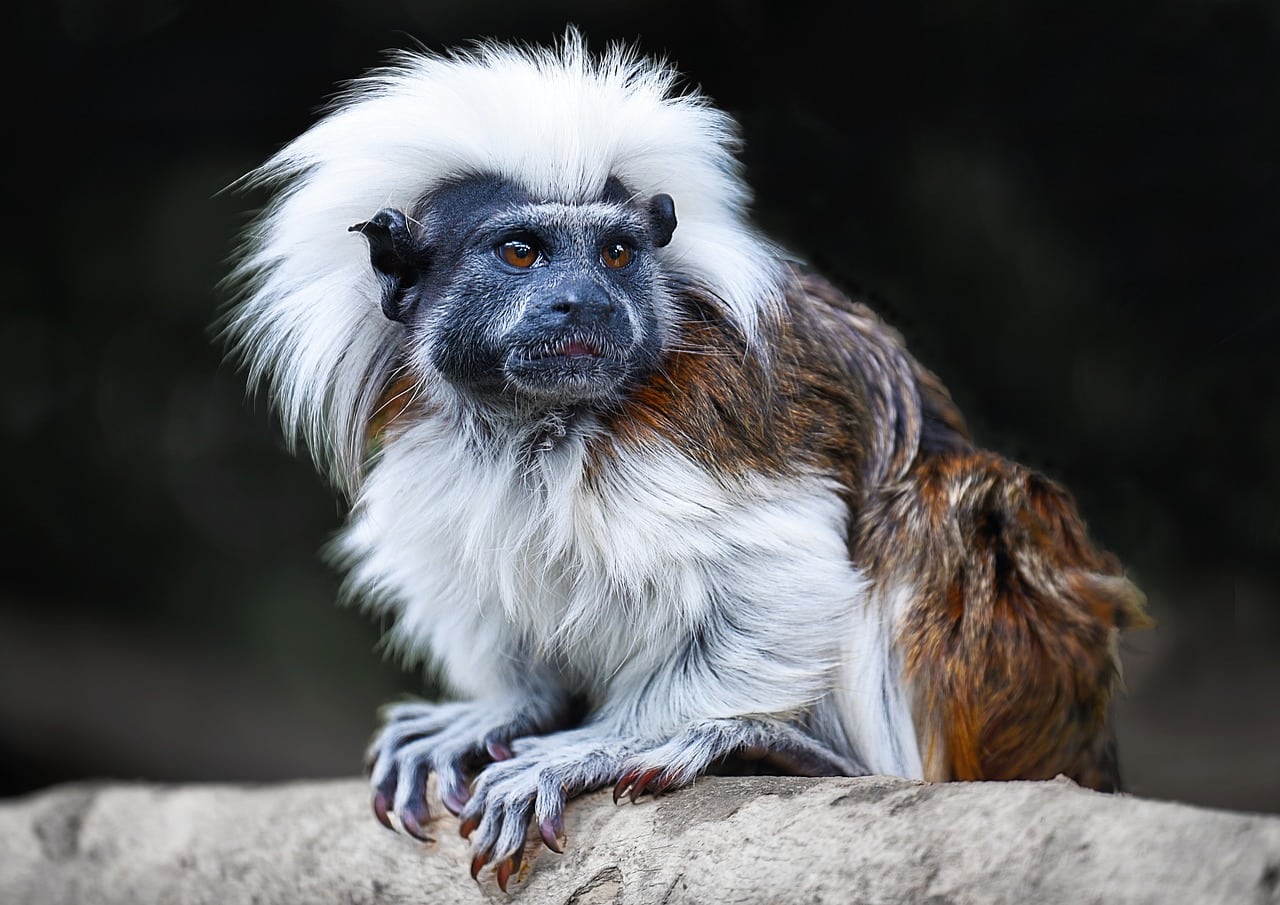
Tamarins are some of the smallest monkeys that you might keep as pets. They weigh less than a pound and live for about 15 years. You’ll only need about 7 square feet of living space for a tamarin, though they still require ample investments of time and energy.
7. Macaque
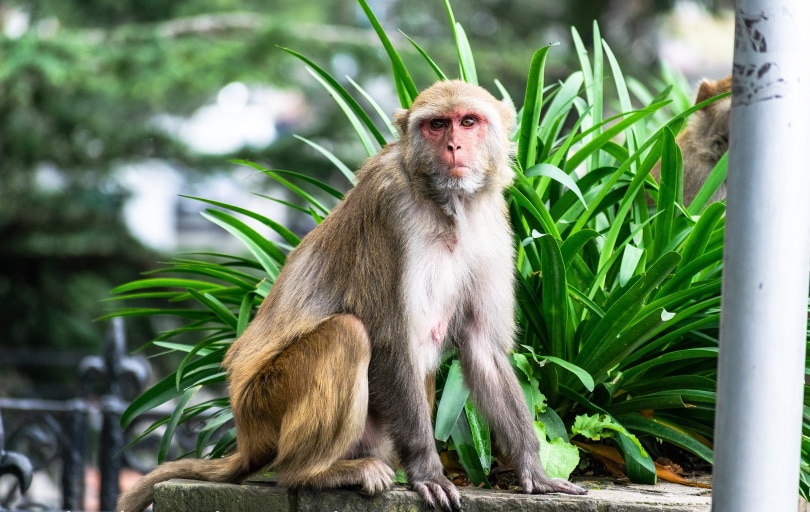
Macaques are moderately-sized primates that can weigh up to 40 pounds at the largest, though the smallest female macaques can weigh as little as 5 pounds. They require huge enclosures of 30 square feet or larger for a single monkey and will need to wear diapers for their entire lives.
Final Thoughts
While the idea of keeping a pet monkey might seem like a novel one, it’s not a great idea. There are many reasons why monkeys should not be kept as pets. Their physical, mental, emotional, and social needs cannot be fulfilled in a satisfactory manner when they’re kept as pets. In addition, they come with a plethora of ethical, health, safety, financial, and legal concerns which further reinforces the case for why they should NOT be kept as pets.
Though adopting a monkey is something that’s definitely not recommended, it doesn’t mean you can’t be proactive in your mission to help monkeys. Making donations to a sanctuary, learning about wildlife preservation, participating in conservation efforts and seminars, and being responsible when interacting with wildlife may seem like trivial tasks, but they have a profound and positive effect on the welfare of not just monkeys but all wild animals.
- See Also: How Much Does a Monkey Cost?
Featured Image Credit: Pixabay





